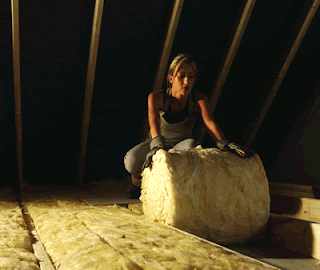Today the Sustainability Team joined forces with the School of Architecture, James Hallybone and Tom Barnsley from Roundfield and Michael Unsworth from the Grounds team to break ground at the site for our new community garden. We haven’t quite started to dig to plant yet but we have dug one meter below the surface to inspect the soil and get an idea of what the quality is like.
| Ducan Goodwin gets into the hole to investigate the soil |
So what’s it like then I hear you cry? Well, just below the surface there is a fair bit of rubble – not too much though, then after that there’s some well drained soil a few pebbles and gravel and then the clay. The School of Architecture first year garden design student will returning to the site to do some more robust testing over the coming weeks but certainly the first look is positive. The soil may not be of an award winning standard it is certainly good enough that we can get a bit of compost mixed in and start digging and planting when the time is right.
| Looking at the different layers in soil |
We are now looking for students, staff members and locals who are interested in getting their hands dirty and getting involved with either the design, building of, maintenance and growing in the garden. If you are interested please email: sustainability@greenwich.ac.uk
Sticking with the theme of growing your own, we are just one month away from our orchard planting at the Avery Hill Campus. On the 1st December this year we will be planting 20 trees including ten varieties of apple, three varieties of pear, two plum trees, two cherry trees, a damson, a medlar and a mulberry tree. The orchard will need staff and students to adopt a tree for watering, pruning and a little bit of care, particularly for the first two years. Not to worry if you don’t have any experience in managing orchards for the London Orchard Project will be offering a training session telling you exactly how to look after a tree through its early years. Once again if you want to be involved in the planting of and adoption of one of our trees please email us at: sustainability@greenwich.ac.uk
Seeing as its Halloween this Monday we have a few little interesting links that we’ve noticed come up today. Firstly over at Planet Pals they have a nearly endless supply of ideas for a green Halloween: http://planetpals.com/green-halloween and Creations by Kara have come up with a great way of recycling an old book into a pumpkin that you will be ablt to use year after year: http://www.creationsbykara.com/2011/09/book-page-pumpkin-tutorial.html
  |
| Creation by Kara: Pumpkin book |
P.S. Don’t forget to turn the bottles of sloe gin you made last week!









